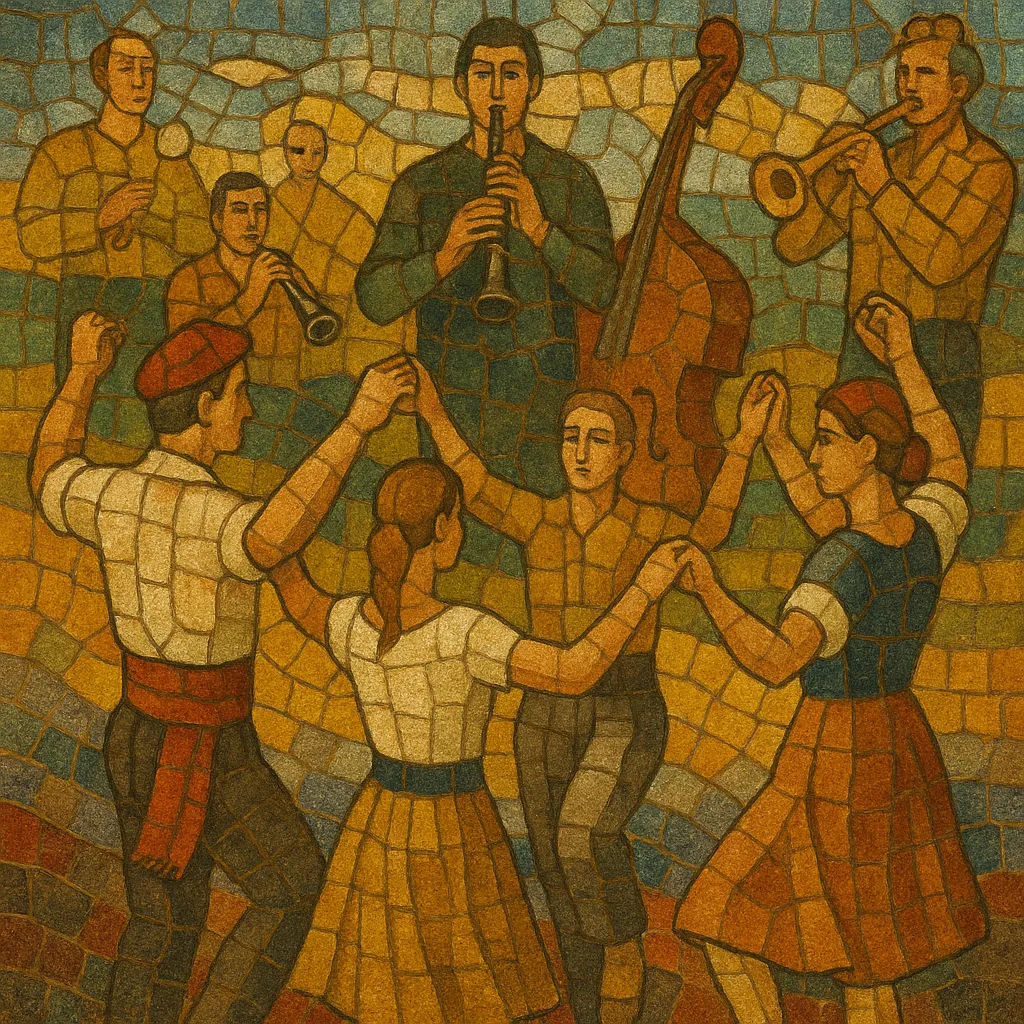Sardana is a traditional Catalan circle dance and musical form performed to a cobla, an 11‑piece wind-and-string ensemble. Dancers join hands in an open circle and alternate short (curts) and long (llargs) step sequences that correspond to the musical structure.
The music is typically in 2/4, led melodically by the tenora (a Catalan shawm) with bright brass colors, agile woodwinds (tibles, flabiol), and grounded by double bass. Sardanes are characterized by an introductory flute signal, balanced phrases, diatonic melodies, and a communal, ceremonial atmosphere.
While circle dances in Catalonia date back centuries, the sardana as a named form crystallized in the 19th century in the Empordà region. Earlier local dances and processional pieces informed its step language and communal format. The use of a wind ensemble to accompany the dance emerged alongside town bands and civic festivities.
The modern “sardana llarga” was codified in the mid-to-late 1800s by Josep Maria “Pep” Ventura (1817–1875). Ventura expanded the cobla’s instrumentation, introduced more developed melodic writing, and lengthened the dance’s musical tirades, creating the now-standard alternation of curts (short steps) and llargs (long steps). This period established the flabiol’s brief opening call and the tenora’s lyrical leadership.
Through the early 20th century, composers such as Juli Garreta, Enric Morera, and Joaquim Serra enriched the repertory with concert-caliber sardanes that still honored the dance’s step logic. During the Franco dictatorship, the sardana functioned as a symbol of Catalan identity; despite periods of suppression of the Catalan language and culture, community aplecs (sardana gatherings) continued and the tradition persisted.
Today sardana remains central to Catalan cultural life—performed in town squares, festivals, and concert settings. Cobles maintain a large repertory from classic composers to new commissions, and dance groups (colles) preserve and teach step technique. The genre is both a participatory social dance and a living musical tradition with active composition and performance.


